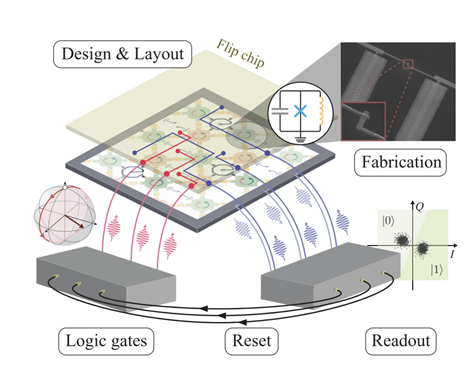Quantifying Qudits: New Measurements Provide a Glimpse of the Quantum Future
Scientists successfully measure high-dimensional qudits, cousins to quantum computing qubits.

The Science
Classical computer bits categorize data only as ones or zeroes. In contrast, quantum bits, or qubits, can hold values of one, zero, or both simultaneously. Lesser-known cousins of qubits called qudits have several advantages. They can carry more information and are more resistant to the noise that can cause qubits to lose information. However, qudits have historically been difficult for scientists to measure and modify. To address this issue, researchers developed a method of measuring qudits encoded in light sources with more precision than was previously possible.
The Impact
Harnessing the power of qudits would improve the performance of multiple quantum technologies. These include quantum networks, which use photons, or particles of light, to share information across vast distances. Another technology is quantum key distribution systems, which transmit data using digital “locks” and “keys” derived from quantum mechanics. Eventually, qudits could play an important role in the creation of a possible quantum internet that could distribute quantum information on a large scale.
Summary
The experiment by a team of researchers from Oak Ridge National Laboratory (ORNL), Purdue University, King Saud University, the Swiss Federal Institute of Technology, and Torch Technologies began by shining a laser into a device called a microring resonator to generate frequency-bin pairs. These are two qudits in the form of photons that are entangled in their frequencies. Entanglement refers to a pair of particles that remain intrinsically connected regardless of the physical distance between them. Instead of relying on a quantum gate, a type of quantum circuit often used in quantum computing research, the researchers used an electro-optic phase modulator, which mixes various light frequencies, and a pulse shaper, which can modify the timing of those frequencies. By performing these operations randomly, they captured a significant number of different frequency correlations.
The researchers then developed a data analysis tool based on a statistical method called Bayesian inference and ran simulations on ORNL computing resources to work backward and infer which quantum states produced the measured frequency correlations. The team is already preparing for future experiments by fine-tuning their measurement method. In conjunction with existing fiber-optic networks, this technique could facilitate comprehensive tests of teleportation (a method of transferring quantum information), as well as entanglement swapping, which involves intentionally entangling two previously unrelated particles.
Contact
Hsuan-Hao Lu
Oak Ridge National Laboratory
luh2@ornl.gov
Funding
This research was supported by the Department of Energy Office of Science, Advanced Scientific Computing Research program and Early Career Research program; the National Science Foundation; the Air Force Office of Scientific Research; and the Swiss National Science Foundation.
Publications
Lu, HH. et al., Bayesian tomography of high-dimensional on-chip biphoton frequency combs with randomized measurements. Nature Communications 13, 4338 (2022). [DOI: 10.1038/s41467-022-31639-z]
Related Links
New measurements quantifying qudits provide glimpse of quantum future, Oak Ridge National Laboratory news
Highlight Categories
Program: ASCR
Performer: University , DOE Laboratory
Additional: Collaborations , International Collaboration



